Last week, I wrote about ESP32-PICO-D4 system-in-package (SiP) that contains ESP32 WiSoC, 4MP SPI flash, a crystal oscilloscator and some passive components in a single 7×7 mm package in order to allow smaller designs based on ESP32. The company noticed the post, and asked me whether I’d be interested in receiving “some development boards based on ESP32 PICO”, an offer hard to refuse :), and within a couple of days I received the package below.
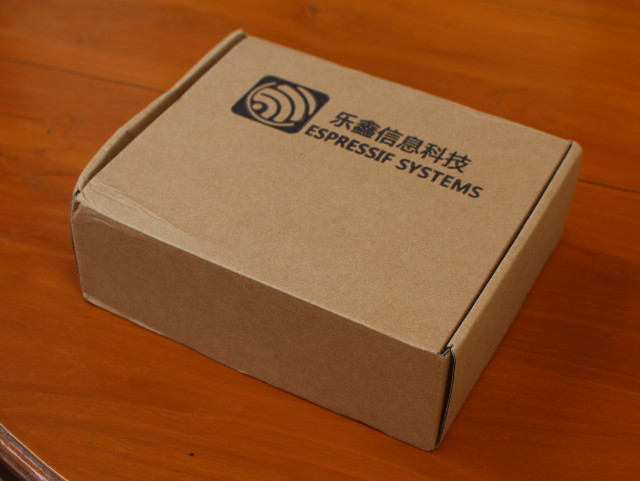 So I ended up with 10 identical development kits, the company probably thought it was no worth paying for DHL to only send one or two development boards… The boards may also be part of some contests… We’ll see 😉
So I ended up with 10 identical development kits, the company probably thought it was no worth paying for DHL to only send one or two development boards… The boards may also be part of some contests… We’ll see 😉
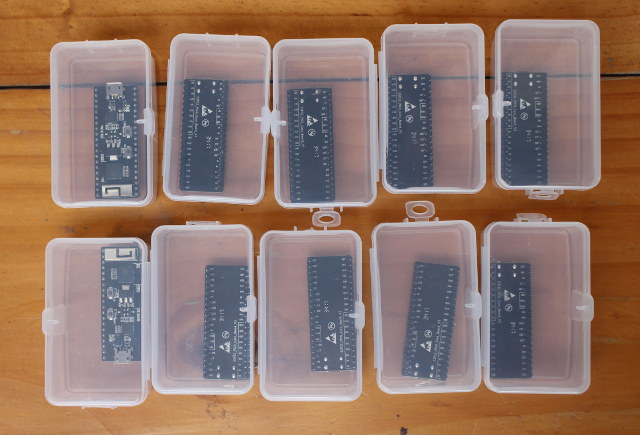 So let’s take two, and have a closer look at “ESP32_PICO_Core_Board_V3″… It comes with two rows of 20 pins with access to all I/Os, and features three main chips: ESP32-PICO-D4 SiP, AMS1117 voltage regulator, and Silabs CP2102 USB to UART controller for programming and debugging.
So let’s take two, and have a closer look at “ESP32_PICO_Core_Board_V3″… It comes with two rows of 20 pins with access to all I/Os, and features three main chips: ESP32-PICO-D4 SiP, AMS1117 voltage regulator, and Silabs CP2102 USB to UART controller for programming and debugging.
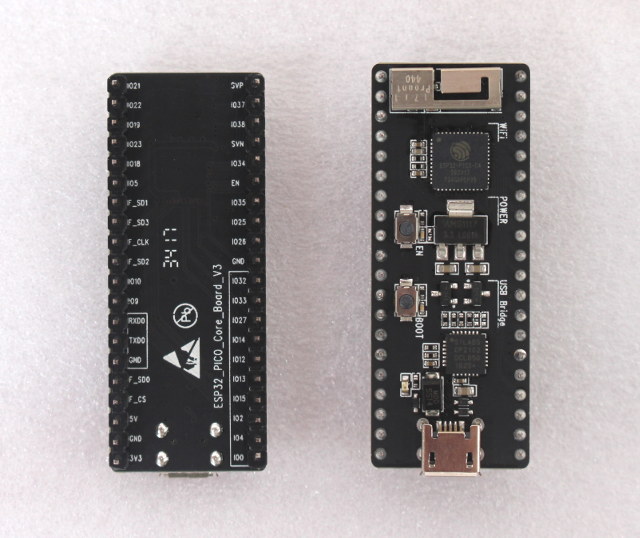
There’s also an antenna, a EN and BOOT buttons, and a micro USB port. The board measures 52x20mm. On actual product, the USB bridge part would be there, so you could have something around half size or even much smaller…
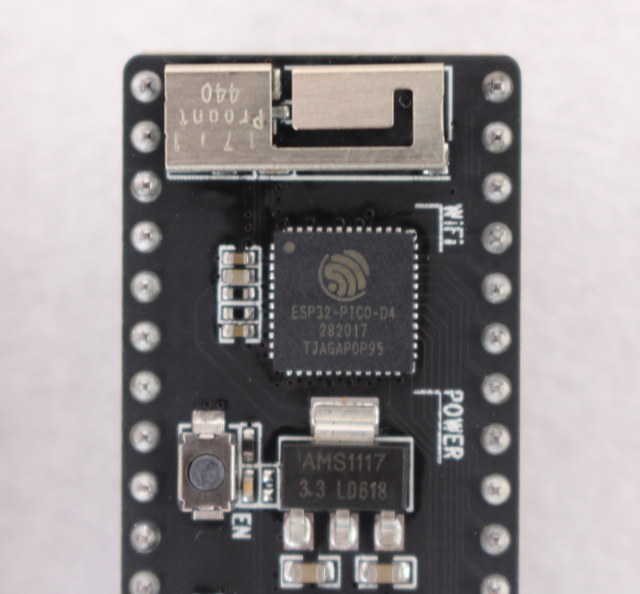
… something like the ESP32-PICO-D4 module below whose picture I found on the web.
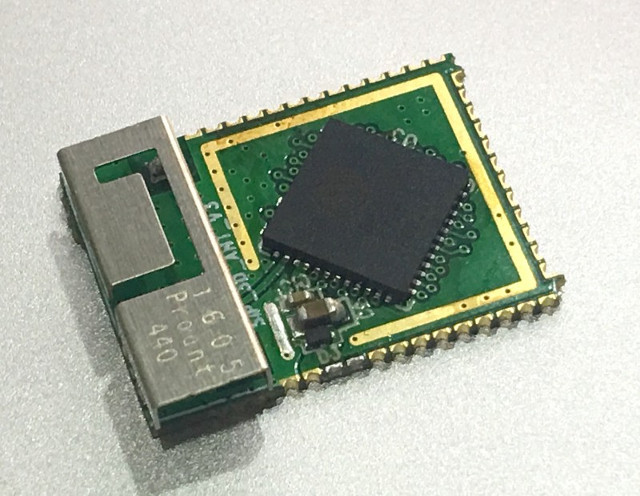 ESP32-PICO-D4 features are basically the same of ESP32 ones, just more compact, so how does ESP32 PICO Core board compares to other breadboard friendly board based on ESP32? To find out, I compare it to ESP32-T board with ESP32-Bit module, and ESPino32 board with ESP-WROOM-32 module, which I plan to review/play with in about 2 weeks.
ESP32-PICO-D4 features are basically the same of ESP32 ones, just more compact, so how does ESP32 PICO Core board compares to other breadboard friendly board based on ESP32? To find out, I compare it to ESP32-T board with ESP32-Bit module, and ESPino32 board with ESP-WROOM-32 module, which I plan to review/play with in about 2 weeks.
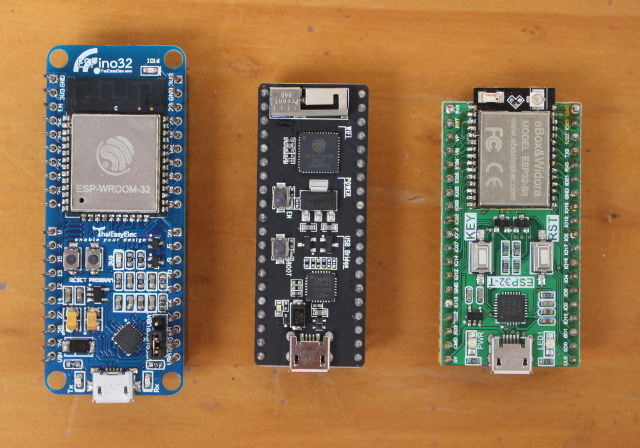
ESP32 Pico Core is clearly smaller. Compared to ESP32-T it’s about the same length, but much thinner, and include 2 extra pins, while in terms on functionality it’s more comparable to ESPino32 both with 40-pins, two button, and micro USB port, but the size difference is even greater.
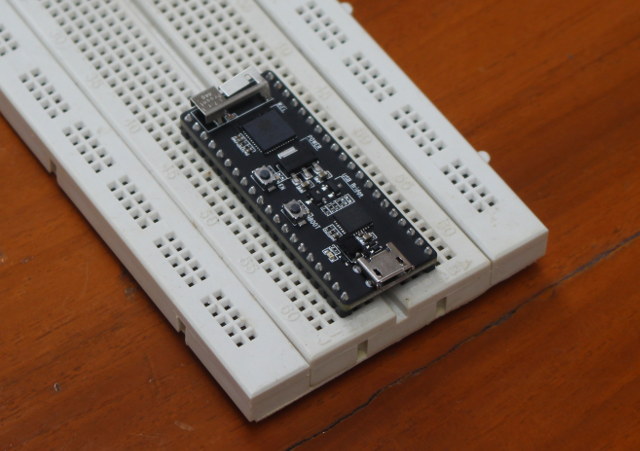
If you wonder, the board is breadboard compatible, and since it’s thinner leave two rows of pins free on each side, compared to just one for most boards.
The boards are not for sale right now, and there’s no info on their website about them. You’ll however find some more details in ESP32-PICO-D4 datasheet.

Jean-Luc started CNX Software in 2010 as a part-time endeavor, before quitting his job as a software engineering manager, and starting to write daily news, and reviews full time later in 2011.
Support CNX Software! Donate via cryptocurrencies, become a Patron on Patreon, or purchase goods on Amazon or Aliexpress




